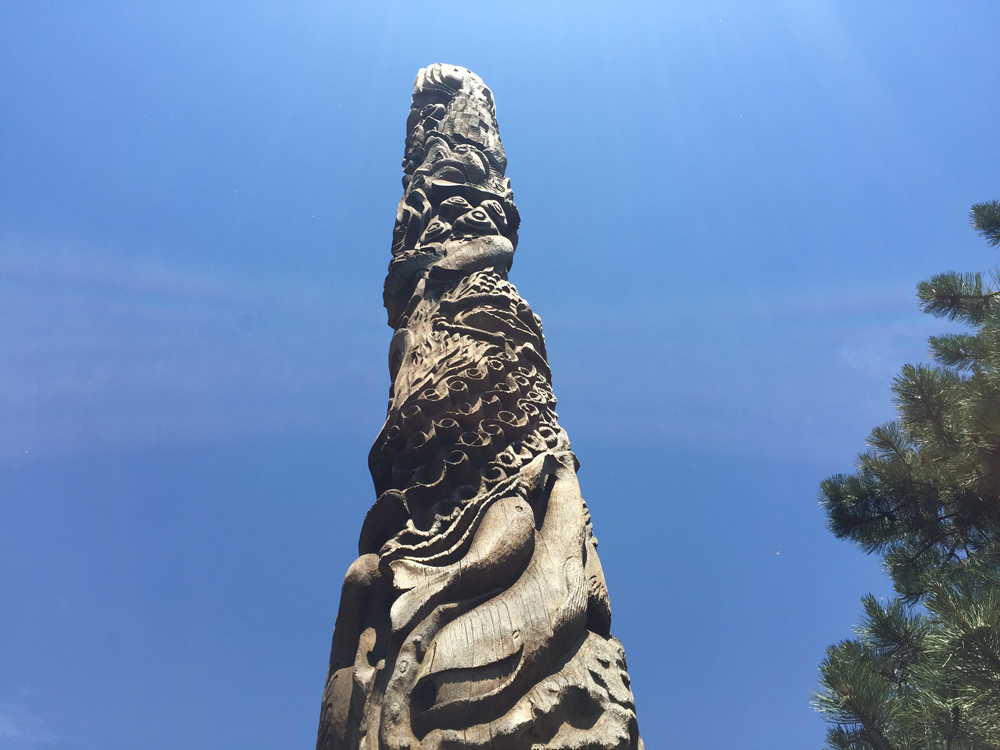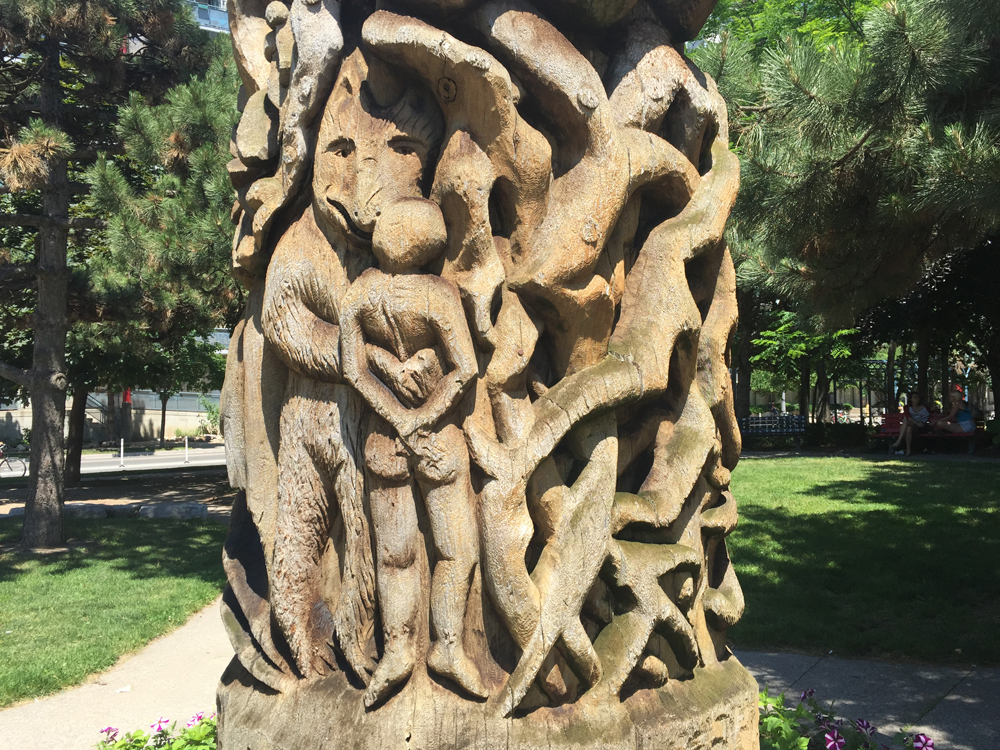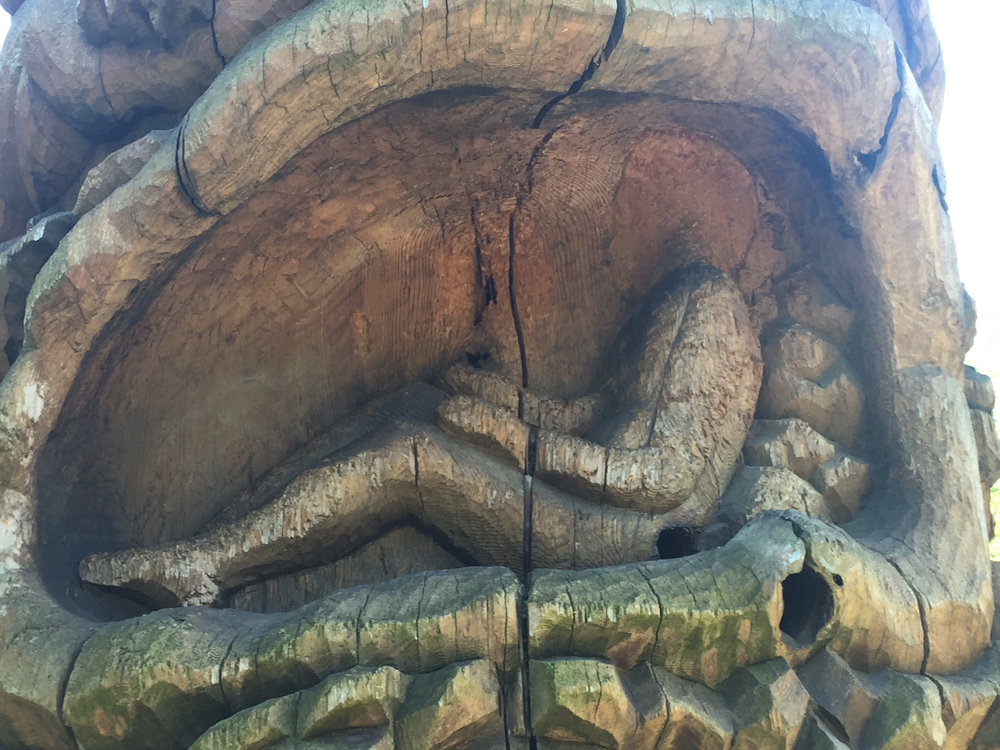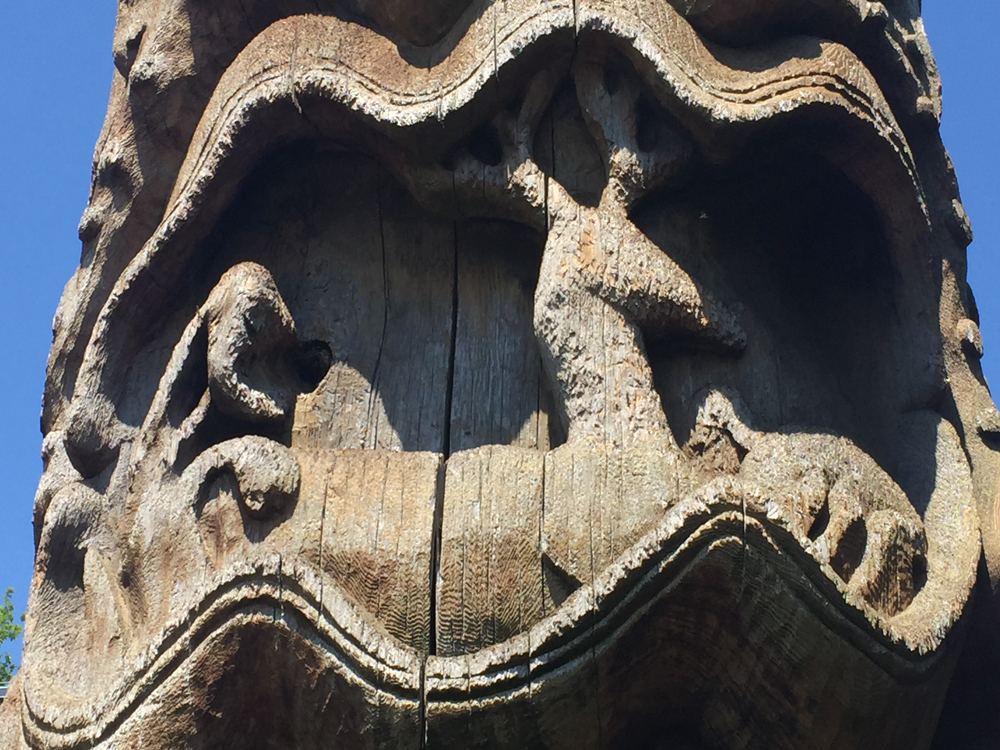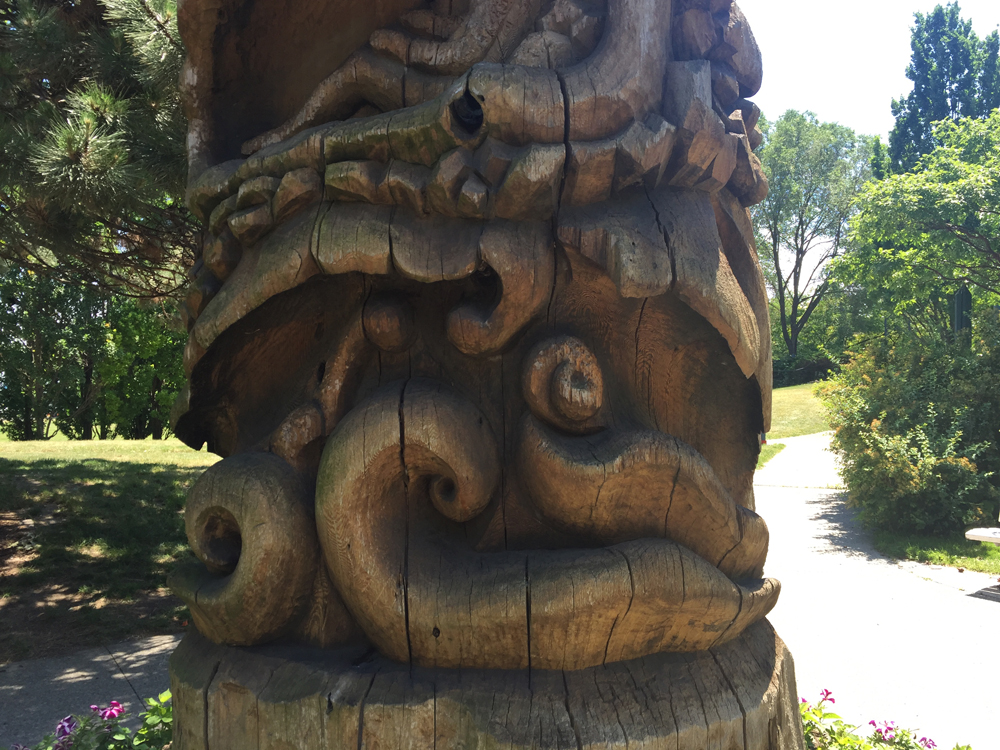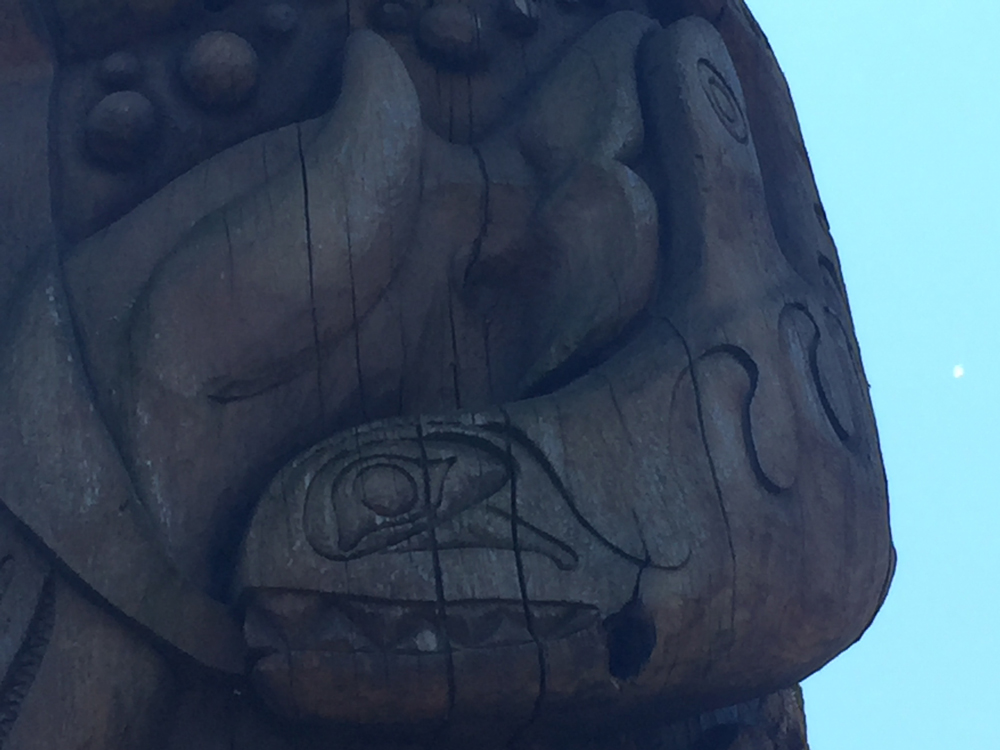What is that?: Waterfront whales depict human relationship with nature
Posted June 22, 2016 12:55 pm.
This article is more than 5 years old.
What is that?: Toronto sculptures explained is a new series looking at a different sculpture in the city every week. Have you seen a piece of public art in your daily commute and wondered what it was about? Me too … so I’ve decided that I’d learn a little bit more about my own city and share it with you.
The Dreamwork of Whales | Little Norway Park, 659 Queens Quay W., west of Bathurst Street
There are no whales in Lake Ontario.
I’ve paddled the waters countless times. I’ve seen no whales.
Even if I hadn’t, I know there are no whales. I don’t even need Google.
But as I walked by a park this past weekend, I was startled to see something I hadn’t seen before.
Yes. Whales. And they’re by the water.
They are in the form of a wooden sculpture at the foot of Bathurst Street near the lake in Little Norway Park.
“The Dreamwork of Whales” reaches up so far into the sky that you can’t see the intricate carvings up there. You’re left examining the bottom portions of the monument.
There are whales (obviously), but also a deer, fish, humans, something that resembles a Yeti.
There are also swirling thick lines flowing up the structure in several spots.
In spite of looking everywhere, I found no plaques near the piece explaining what the carvings mean.
According to the book “Creating Memory: A Guide to Outdoor Public Sculpture in Toronto,” the design was created by a British Columbia artist named Georganna Malloff. It was carved by five sculptors (with occasional help from other carvers) in five months in 1981. The five sculptors were Ben Barclay, Daniel Gauvin, Earl Thomlinson, Julian Bowron and Lynn Daly.
The piece is so tall, standing at 12 metres, and is made up of so many intricate carvings, that it’s hard to imagine it being completed in only five months.
Creating Memory says the pole is about the state of the environment and human’s interactions with it, with the objective of it being for people to “dream and think like a whale.”
I’d like to think of it instead as a reminder of the wildlife (whales!) that make other waters their home (not Lake Ontario).
The structure’s height symbolizes a long time span, the book explains, with various forms of life carved into it, including several whales.
The sculpture was based on a similar pole in Vancouver that was built in 1976 for the United Nation Habitat Forum.


